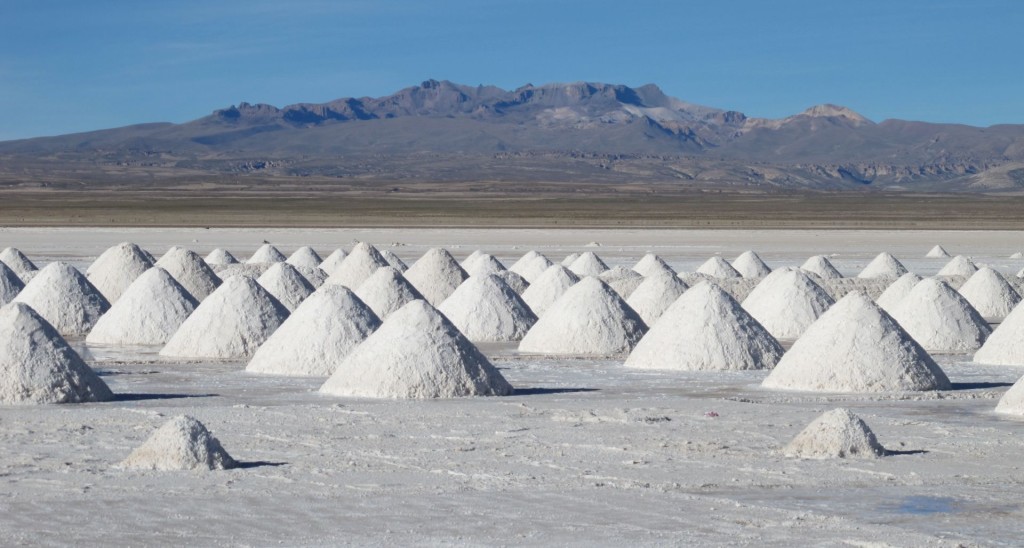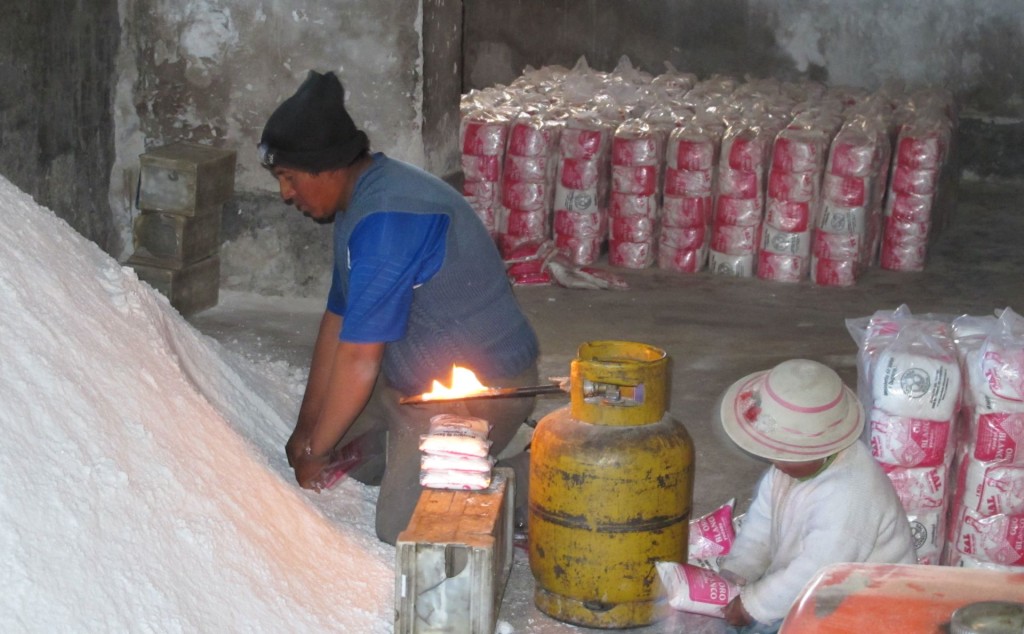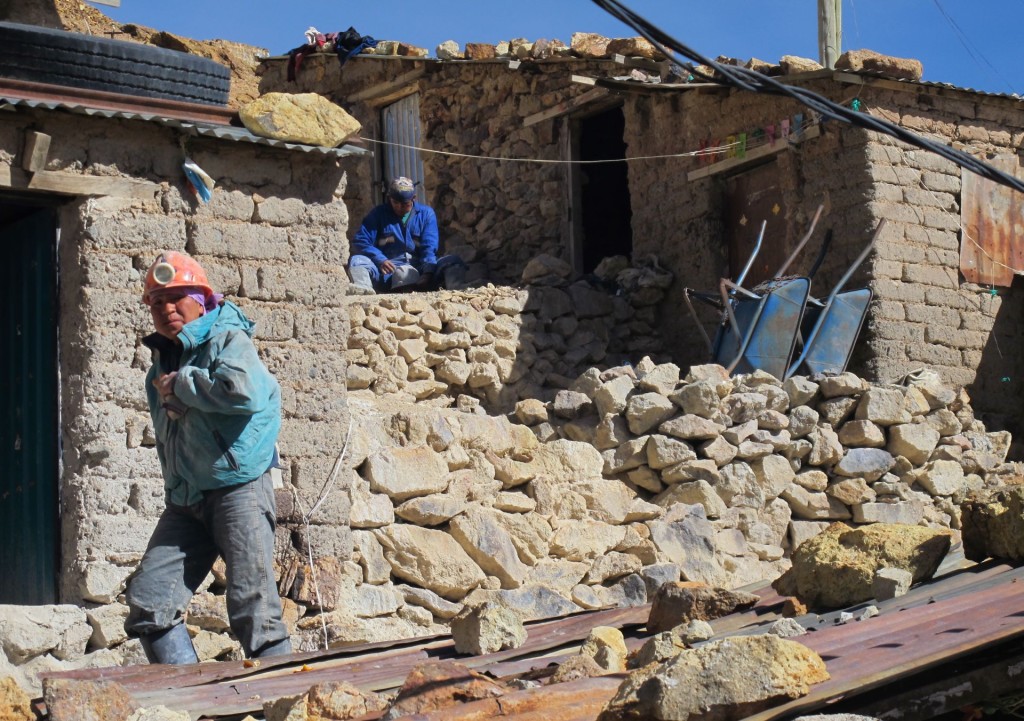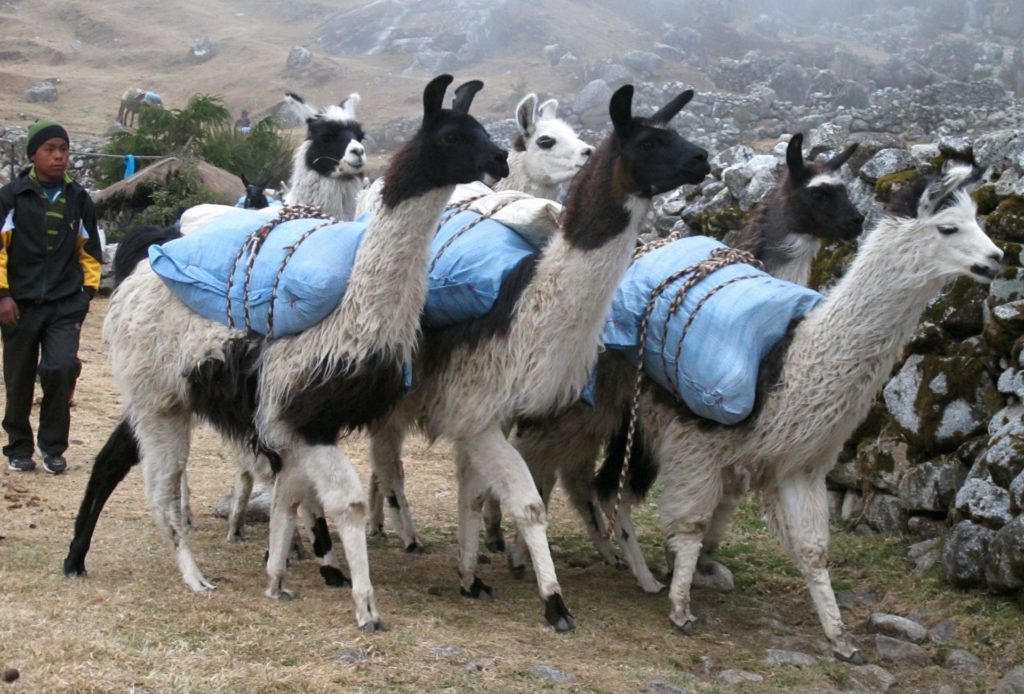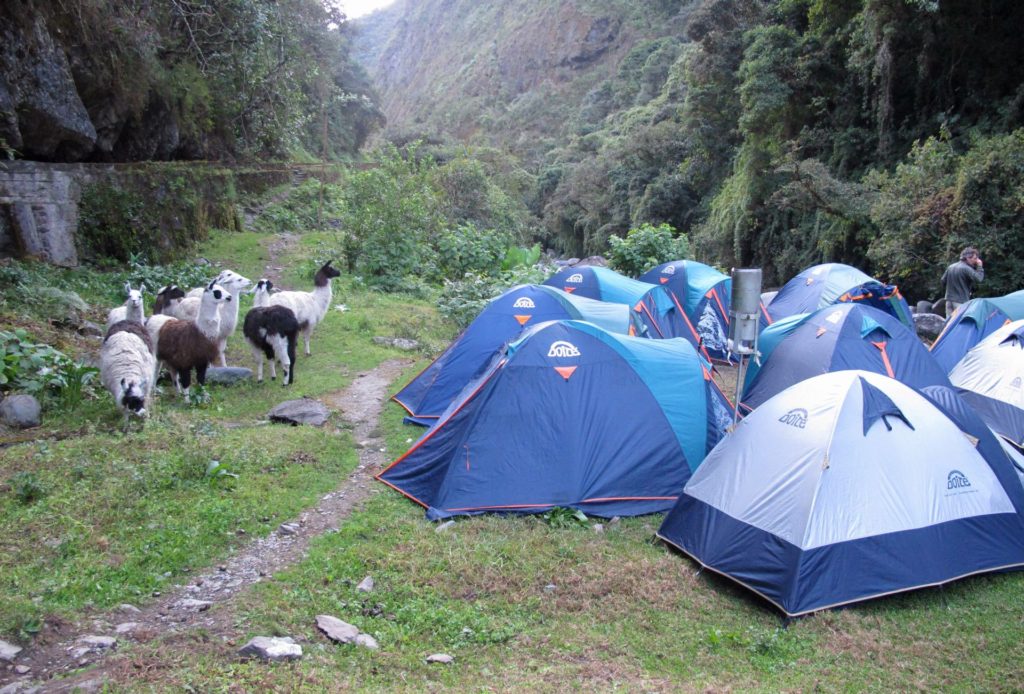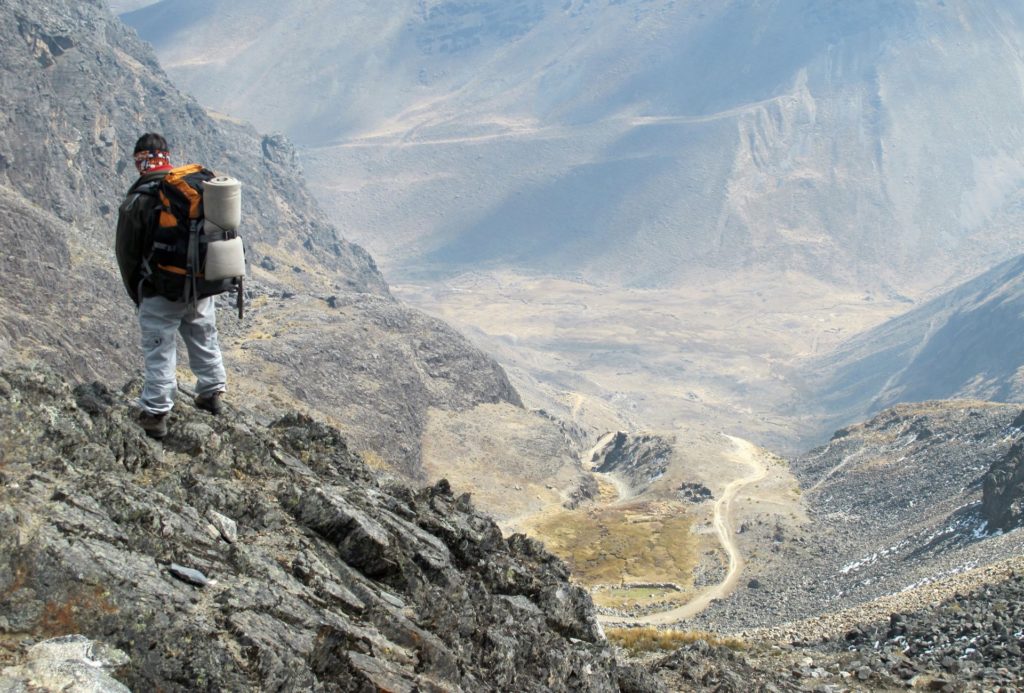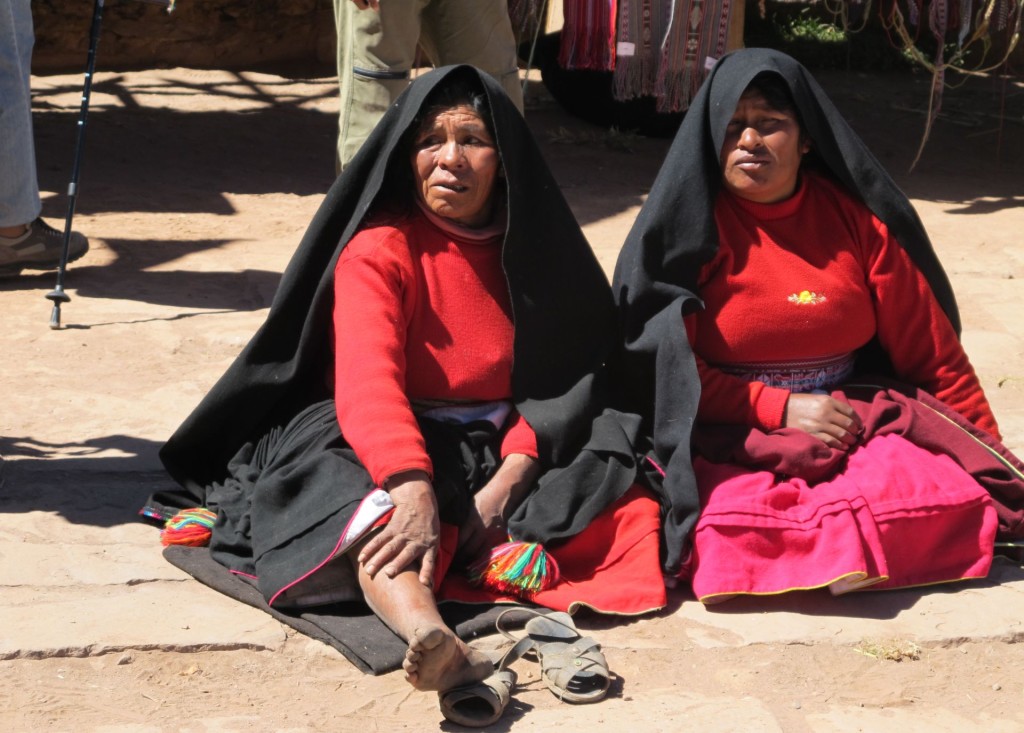As Bolivia is one of the highest and most isolated countries in the world, it is still completely authentic and mostly untouched. This country offers great cultural experiences, fantastic natural beauties and extreme adventures. You certainly should not miss the following experiences:
- Explore Salar de Uyuni
Meet an Indian family that earns a living from salt exploitation. Enjoy the view from the top of Isla de Pescadores (Fishermen’s Island) that is completely covered by giant centuries-old cactuses. During the day you need suntan cream and sunglasses, at night you need gloves and thick coats, as it can be very cold, especially in July and August. And don’t miss the spectacular sunset above the lake with its shining salt crystals: it is a top experience!
Salar de Uyuni (3,650 m above sea level) is one of the highlights of a trip to Bolivia. It covers 10 km sq. and is the world’s largest salt flat. It is an extraordinary experience to explore this lake by 4WD. Visiting Uyuni, formed by one billion tons of salt, you will see flocks of flamingos, while llamas and vicuňas are grazing at the edges of barren volcanic desertscapes. You can even spend the night in a hotel made of salt.
- Make a mining tour in the man-eating silver mines of Potosi
Despite the risks, half of Potosi’s population works in the mining industry. Many as young as 13 must endure for up to 10 hours a day. As there are dozens of deaths each year inside the mountain it is also called: the Mountain that Eats Men. There is no lighting, no safety regulations, no modern rail cars. Don’t make the mining tour when you suffer from claustrophobia, asthma or respiratory problems! And when you go, you should buy alcohol, water, cigarettes and dynamite for the miners. And coca leaf. As the miners, who earn 14 dollars a day, can only survive by chewing wads of coca.
Potosi’s Cerro Rico or Rich Hill is a mountain so heavily laced with silver that it has become a legend. In the 16th century, this silver made Potosi – now a UNESCO World Heritage site – the wealthiest city in the world. Over 250 years, the Spanish put to work around 33 million Indians in the mines. Most of them died within a very short time. You can make a two-hour mine tour, joining the thousands of miners who enter the labyrinth of tunnels every day. Equipped with protective gear, you will maneuver through narrow tunnels and passageways.
- Eat guinea pig and drink coca tea
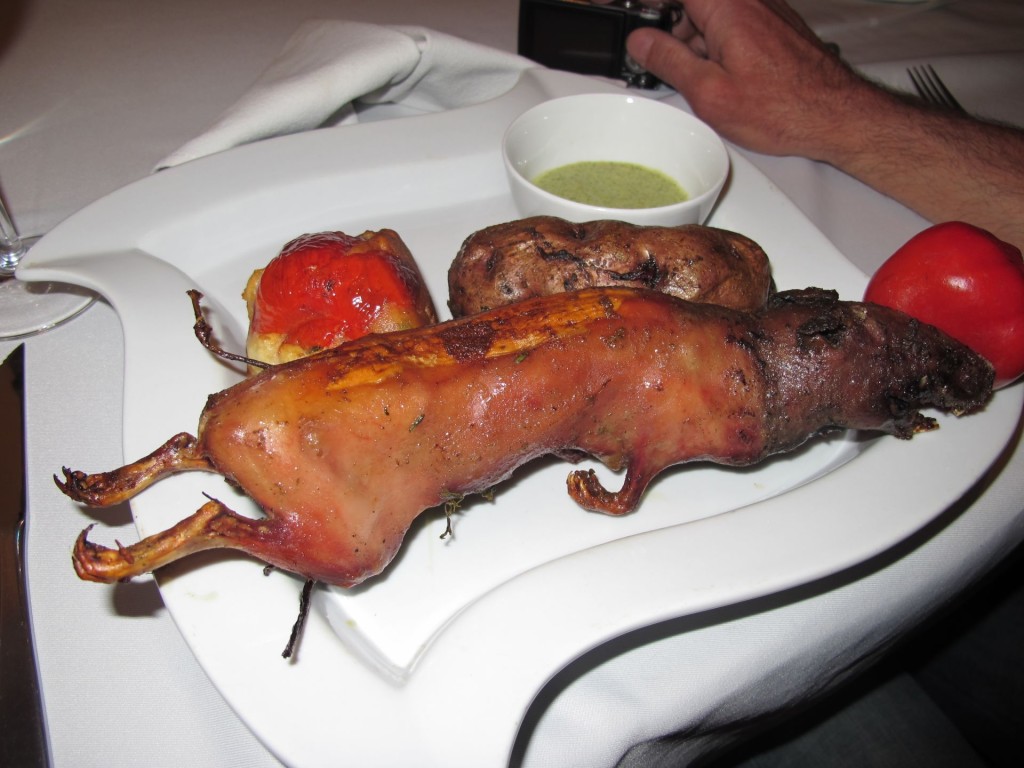 Coca tea or “mate de coca” is a herbal tea made using the raw leaves of the coca plant. The taste is similar to green tea. As it is perfectly legal in Bolivia, it is recommended for travelers in the Andes to prevent altitude sickness. Traditional medical uses of coca are foremost as a stimulant to overcome fatigue, hunger and thirst. That is why it is often used by the miners in Potosi. The cultivation of coca dates back 4,000 years in the Andes and it is also interesting to see the plantations of coca plants!
Coca tea or “mate de coca” is a herbal tea made using the raw leaves of the coca plant. The taste is similar to green tea. As it is perfectly legal in Bolivia, it is recommended for travelers in the Andes to prevent altitude sickness. Traditional medical uses of coca are foremost as a stimulant to overcome fatigue, hunger and thirst. That is why it is often used by the miners in Potosi. The cultivation of coca dates back 4,000 years in the Andes and it is also interesting to see the plantations of coca plants!
Originally domesticated for its meat in the Andes “cuy” or guinea pig continues to be a major part of the diet in Bolivia. Guinea pigs are sold at the markets. Their meat is high in protein and low in fat and cholesterol, and the taste is similar to rabbit and chicken. “Cuy” may be served fried (frito), broilec (asado) or roasted (al horno). Give it a try, it is really tasty!
- Visit the Witches’ Market in La Paz
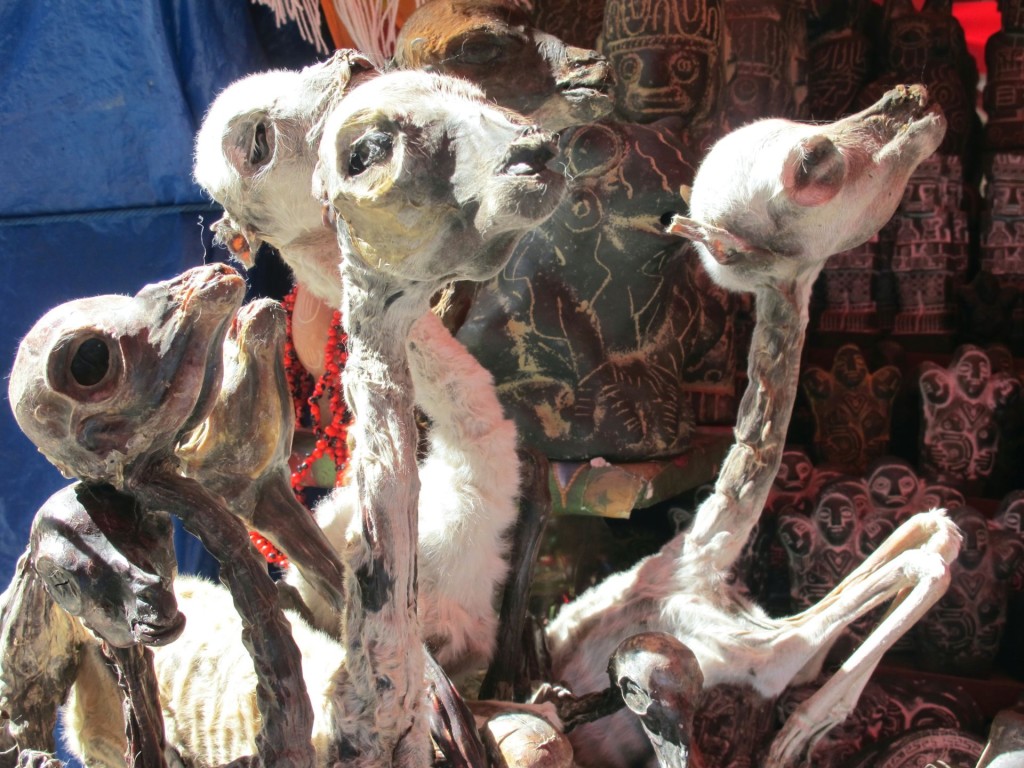 The Mercado de las Brujas or Witches’ Market is a unique site of La Paz, the capital of Bolivia. Here you can see Aymara women with their bowler hats and colorful costumes, selling dried llama fetuses, herbs, and soapstone figurines of the goddess Pachamama. On the market you can also find hand-made carpets, dried frogs and coca leaves! The llama fetuses are fairly large and look horrible. As a matter of fact, Bolivians don’t kill baby llamas, instead they use fetuses that have come from miscarriages. They are always buried in the constructions of businesses and homes as an offering to Pachamama for protection, health, happiness and good luck. It is an unforgettable experience to visit the Market and to learn more about the culture and religion of the Aymaras!
The Mercado de las Brujas or Witches’ Market is a unique site of La Paz, the capital of Bolivia. Here you can see Aymara women with their bowler hats and colorful costumes, selling dried llama fetuses, herbs, and soapstone figurines of the goddess Pachamama. On the market you can also find hand-made carpets, dried frogs and coca leaves! The llama fetuses are fairly large and look horrible. As a matter of fact, Bolivians don’t kill baby llamas, instead they use fetuses that have come from miscarriages. They are always buried in the constructions of businesses and homes as an offering to Pachamama for protection, health, happiness and good luck. It is an unforgettable experience to visit the Market and to learn more about the culture and religion of the Aymaras!
- Hike the Takesi Trail
The Takesi trail is a pre-Columbian trail, built over 5000 years ago. The trek begins at an altitude of 3,600 m and then weaves up over the Cordillera Real to 4,650 m, before dropping down into the Yungas. The 45 kilometer hike (two or three days) ends at an altitude of 2,080 meters, in the pleasant village of Yanacachi. Yes, it is a big effort, but also a great adventure! You will sleep in little tents in the barren wilderness of the Takesi village, where the temperature can drop until far below zero.
You will be accompanied by Bolivian guides and llamas will carry your luggage. You will be delighted with the magnificent views. And moreover, as most of the trek goes downhill – you will slowly make your way into the semi-tropics, where you can enjoy beautiful greenery and flowers (and the higher temperatures!).
- Attend the car blessing ceremony in Copacabana
 Copacabana is situated on the Bolivian side of Lake Titicaca. It has a large 16th-century shrine, the Basilica of Our Lady of Copacabana, the patron saint of Bolivia. People come to this place from all over the region to take part in a car blessing ceremony on the shores of the Lake. Each day, cars jam the streets in front of the Basilica, patiently waiting for the blessing. The sidewalks are lined with stalls selling flowers, confetti, toy cars, candies and beverages – everything that is necessary for the ritual. The blessings take place everyday upon the appearance of a priest who walks around sprinkling holy water on the vehicles dispensed from a bucket. It is a weird ritual, something you would expect in a surrealistic movie – don’t miss this experience!
Copacabana is situated on the Bolivian side of Lake Titicaca. It has a large 16th-century shrine, the Basilica of Our Lady of Copacabana, the patron saint of Bolivia. People come to this place from all over the region to take part in a car blessing ceremony on the shores of the Lake. Each day, cars jam the streets in front of the Basilica, patiently waiting for the blessing. The sidewalks are lined with stalls selling flowers, confetti, toy cars, candies and beverages – everything that is necessary for the ritual. The blessings take place everyday upon the appearance of a priest who walks around sprinkling holy water on the vehicles dispensed from a bucket. It is a weird ritual, something you would expect in a surrealistic movie – don’t miss this experience!
- Enjoy a walk around Isla del Sol
From Copacabana you can take a boat to Sun Island, Isla del Sol, the sacred Inca island in Lake Titicaca. The Aymara people were the first inhabitants of the island, and most structures credited to the Inca were built by them, including the Inca Staircase and the Inca Fountain. According to Inca mythology, Isla Del Sol was the place were Viracocha, the sun god, created the first Inca man and woman. Enjoy the great picture opportunities and learn more about history and legends. There are no cars on the island, so that everything is quiet and peaceful. The views of the high snow-covered tops of the mountains on the other side of the Lake are magnificent and the Inca ruins that can be visited at different places contribute to the mystic atmosphere.

